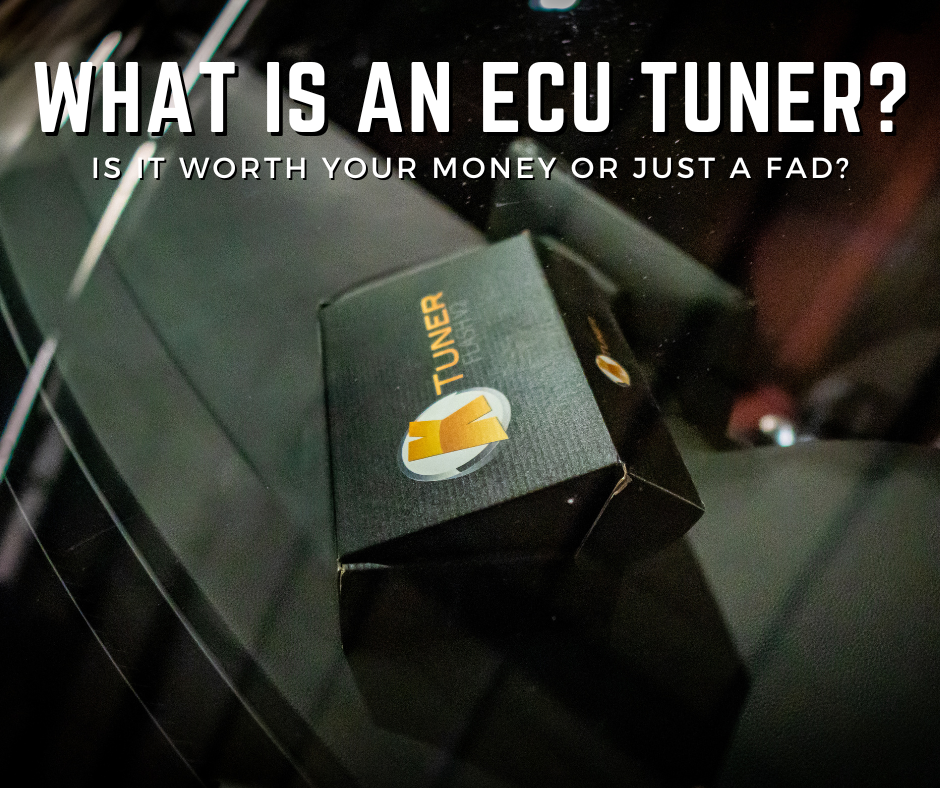
Fuel injection has been around for decades, and controlling how the fuel, air, and ignition interact is the job of the ECU / ECM (engine control unit or engine control module). Early versions of the ECU had rudimentary settings that weren’t easily changed and required computer chips to be removed and replaced to make adjustments. Those are the days of the “chipped” ECUs and thankfully that technology has evolved into the laptop and handheld revolution we enjoy today. Your current ECUs come standard from the manufacturer with a calibration (or tune) that has settings for fuel input and combustion ignition timing based on the oxygen (or simply air) going into the engine. Those settings for fuel input and ignition timing change based on the RPM or speed of the engine, the density of air (i.e. the amount of oxygen) going into the engine, and the amount of oxygen detected in the exhaust gasses leaving the engine after combustion. These settings are calibrated for a balance between horsepower, noise level, exhaust gas emissions, and fuel mileage. The process of ECU tuning adjusts the base settings to further optimize the air, fuel, and ignition settings.
 What Are the Benefits of ECU Tuning?
What Are the Benefits of ECU Tuning?ECU tuning is often associated with adding aftermarket parts such as a new high-flow cold air intake or a higher-flowing exhaust. More airflow into the engine means you may need to adjust the amount of fuel added for proper combustion. Less restriction in the exhaust can also indicate similar changes are required. While those simple changes can be made, tuning the ECU can offer more benefits such as:
- Adjusting closed loop fuel maps, ignition timing, ECM controlled turbo response, and target boost pressure
- Clearing error codes when changing parts
- Smoothing twitchy or sluggish throttle control into a gradual throttle response
- The throttle response can also be increased from mild to very aggressive
- The factory rev limiter can be increased
- Addition of an adjustable standing launch limiter (launch control)
- The "rev hang" can be adjusted to be softened or removed completely
-
On-the-fly boost map switching can be made active between maps
- Addition of a “valet” mode to reduce horsepower for other drivers

It’s always hard to answer the question if something is worth your time and hard-earned money. Everyone wants more power, especially more usable power, but there isn’t a resounding yes for all situations. Another question that should be asked is if any changes of parts or ECU tuning will void any part of a warranty if you still have a warranty on your vehicle. It may be a better option to enjoy what you have rather than affect your warranty. And lastly, does your local area have inspections or emissions requirements that you should be aware of before modifying your vehicle? They may not be a reason to avoid modifications, but it may add a level of difficulty if you need to remove or replace items before an inspection period. If there are no restrictions, then it may be time to find a reputable shop or store that can answer your questions and help you purchase the ECU tuning that best fits your wants and needs.






